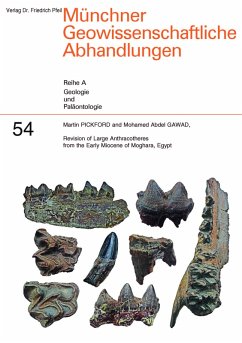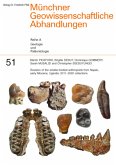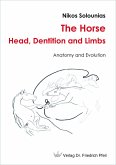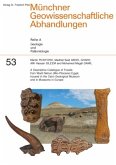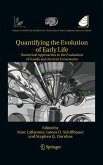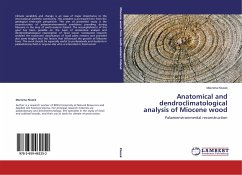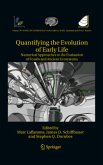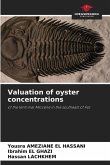At the time that Fourtau (1918,¿1920) wrote about the Moghara anthracotheres, there were no complete mandibles of Brachyodus from Europe available for comparison, and only a few upper molars and premolars had been illustrated. The most complete mandible known at that time, and the only one in which the symphysis is (partly) preserved, was a crushed juvenile specimen from Horta das Tripas, Lisbon Basin, Portugal (Roman, 1907, text fig.¿3, pl.¿2, fig.¿1) the symphyseal area of which differs markedly from mandibles of Brachyodus onoideus and Brachyodus depereti, a fact that misled Fourtau (1918) into thinking that his holotype mandible of species depereti belonged to a different genus, Masritherium. Even though the Horta das Tripas specimen is quite well preserved, the morphology of the symphyseal region differs from the adult condition. The other reason that Fourtau (1918) erected the new genus Masritherium was that the sample of upper premolars and molars that he had from Moghara differed from those of Brachyodus onoideus, an observation that is borne out by the present study, some of the specimens representing the genus Jaggermeryx Miller et¿al. (2014) but others the new genus Aegyptomeryx. Even in Europe, researchers experienced difficulties matching anterior teeth of anthracotheres to their cheek teeth, and the Moghara specimens have posed comparable problems. Mayet (1908) for example, attributed a premaxilla of Brachyodus onoideus containing the incisors, to a carnivore (Pseudocyon depereti), and Fourtau (1918) erroneously identified two anthracothere mandibular symphyses as Proboscidea (see also Tobien, 1973). Furthermore, by 1918, no neurocrania of Brachyodus onoideus had been described. Working in Egypt on the fossils during and immediately after the First World War meant that Fourtau was handicapped by a lack of access to much of the relevant literature - for the sections on Brachyodus and Masritherium, he cited only the works of Depéret (1895) Andrews (1899) and Mayet (1908). Discoveries of mandibles and skull fragments of early Miocene anthracotheres in Africa and Europe after 1920 reveal that a large proportion of the specimens attributed by Fourtau (1918,¿1920) to Brachyodus and to Masritherium belong to other genera. The smaller specimens attributed by him to Brachyodus moneyi were subsequently assigned by Black (1978) to the genus Hyoboops Trouessart (1904) and then to Sivameryx by Pickford (1991) because Hyoboops is a junior synonym of Sivameryx Lydekker (1877). The larger specimens attributed to Masritherium and Brachyodus by Fourtau (1918, 1920) proved to be difficult to identify correctly. The neurocranium that he included in Brachyodus africanus is hypsicephalic, unlike the less tall skull of Brachyodus onoideus - the morphology of the neurocranium of which was described many years later (Dineur, 1982, plate¿VIII). The edentulous mandible that Fourtau (1918, fig.¿31) identified as Brachyodus africanus differs markedly from lower jaws of Brachyodus, as was realised by Miller et¿al. (2014) who attributed it to Jaggermeryx naida (Jaggermeyx africanus in this paper). Fourtau (1918) noted that this mandible was radically different from that of the holotype lower jaw of Masritherium depereti, which is a correct observation. His attribution of the specimen to Andrews' 1899 species Brachyodus africanus is also correct. What he did not realise, due mainly to the paucity of the fossil record in Europe, where no adult lower jaws with symphyses of Brachyodus had been described at the time that he worked, was that the type specimen of Masritherium depereti is in fact a lower jaw of Brachyodus, being a close match to European specimens from MN 4 attributed to Brachyodus onoideus, and somewhat different from jaws of Brachyodus intermedius from MN¿3. The latter species possessed a central incisor on each side between the two tusk-like teeth at the antero-lateral corners of the symphysis, whereas Brachyodus onoideus and Brachyodus depereti show no sign of such a tooth, the anterior margin of the symphysis being wafer thin. Most of the original hypodigm of Masritherium depereti is indeed different from Brachyodus onoideus, which is one of the reasons why Black (1978) maintained the genus Masritherium and the species depereti, and even transferred Brachyodus aequatorialis MacInnes 1951, to Masritherium. The holotype mandible of Masritherium depereti is morphologically close to specimens of Brachyodus onoideus, as was shown by Dineur (1982) and Pickford & MacLaren (2022). Most of the specimens attributed to Masritherium depereti were left by these authors in this species (Black, 1978) even if they changed the genus name (Miller et¿al. 2014). However, it is now evident that Fourtau's (1918, 1920) hypodigms of Brachyodus africanus and Masritherium depereti contain remains of three other genera as well, Mogharameryx gen. nov., Masrimeryx gen. nov. and Aegyptomeryx gen. nov. (see below). The information now available from Moghara reveals that Fourtau (1918, 1920) was correct in concluding that there was a new genus of large anthracothere at Moghara, but unfortunately he selected a holotype (the mandible of Masritherium depereti) that is practically indistinguishable from the mandibles of Brachyodus onoideus, not only morphologically but also metrically. Most of the specimens attributed by that author to his new genus do indeed differ from Brachyodus - many of the characters that he described reflect this. In particular, the morphology of the upper teeth and maxillae differ from the corresponding parts of Brachyodus. Since the publication of Fourtau's (1918, 1920) monograph, only a few researchers have discussed the anthracotheres from Moghara, and of these only four based their observations on first hand knowledge of the fossils (Hamilton, 1973;¿Black, 1978;¿Pickford, 1991;¿Miller et¿al. 2014) most of the others mentioning the taxa in passing (Forster-Cooper, 1924;¿MacInnes, 1951;¿Dineur, 1982) or dealing with general reviews of the family (Lihoreau & Ducrocq, 2007;¿Holroyd et¿al. 2010). The collections in the CGM, CUWM and DPC contain abundant undescribed anthracothere material that throws an appreciable amount of light on their anatomy, and thus on their taxonomy and systematics. It is clear from the literature that dental anatomy and dimensions were the principal focus of most authors for determining taxonomic and systematic issues. Cranial osteology appears to have played a minor role in their decisions, even if the specimens were described in detail. Post-cranial evidence barely features in taxonomic discussions of the Moghara anthracotheres, mainly because of the lack of association between the dento-gnathic remains and the post-cranial skeletal elements. This study reveals that cranial architecture is highly relevant for resolving taxonomic issues among anthracotheres. The teeth do provide a great deal of information, especially if they are unworn, but there is a significant amount of convergence and parallelism in the cheek dentitions as well as the retention of primitive dental morphology among the diverse genera. In addition molars, in particular, are variable in the minor structures (crista, cristids, styles, stylids, cingula) that they possess. The aim of this section, therefore, is to describe and interpret the available anthracothere fossils from Moghara and to compare them with penecontemporaneous material from other parts of Africa and Eurasia.
Hinweis: Dieser Artikel kann nur an eine deutsche Lieferadresse ausgeliefert werden.
Hinweis: Dieser Artikel kann nur an eine deutsche Lieferadresse ausgeliefert werden.

